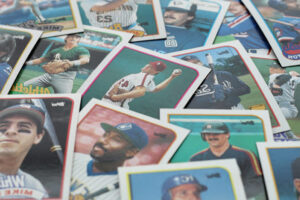Whether a seasoned sports card collector or a newbie, you must understand how to grade a sports card. Despite the grading process being thorough and requiring knowledge and tools, it is possible to gauge a card’s quality if you know the basics. So read on.
What’s Sports Card Grading?
Card grading is when you submit a trading card to a third-party service to verify its quality. They inspect your card and usually rank it on a 10-point scale based on its condition.
Graded cards are usually regarded as more “valuable” than ungraded ones because they have these advantages
- Indisputable proof of authenticity
- No subjective condition assignments (that means your cards are evaluated based on general or universal experience)
- Database-based accountability system.
By the way, don’t worry when you send your card for evaluation; they use special tools to protect your card from dirt, dust, and other wear and tear.
Qualitative Sports Card Grades
The grades are as follows (from best to worst). See here for a detailed explanation of these terms.
Mint, Near Mint, Excellent-Mint, Excellent, Very Good, Good, Fair, Poor.
Quantitative Spots Card Grades
Grading companies use numerical attributes based on centering, corners, edges, and surfaces. The scale and numerical evaluations depend on the company that grades your sports cards:
- Beckett uses a scale of 1-10 with sub-grades.
- PSA grades also on a flat 1-10 scale.
- SGC has a scale out of 100, which they then use to give the card a grade of 1-10.
Factors to Consider When Grading Cards
The four parameters that determine the grade of your card are explained here below.
Corners
“Gem Mint” cards should have four square corners, a standard across all companies grading cards. Any slight imperfection on one corner harms the overall grade. Multiple corner issues will denote poor condition. Cards labeled “Fair” or “Poor” usually have severely rounded corners.
Edges
A sports card’s edges (or borders) can also affect the card’s overall grade. Make sure that your cards have sharp edges with no signs of chipping, paper loss or hand cutting.
Surface
Surface problems are prevalent in sports cards and come in various forms. However, some are more common, including:
- Wax stains
- Print defects
- Focus imperfections
- Scratches
- Scuffing
Centering
Centering is another key factor in determining a card’s grade. Some collectors insist that their cards should have near-perfect centering. But others tend to overlook centering in hopes of a card with little surface wear or pristine corners.
Having learned this, we can now grade sports cards qualitatively or quantitatively. But that’s only the beginning; continue reading “Understanding Sports Cards Conditions.”


